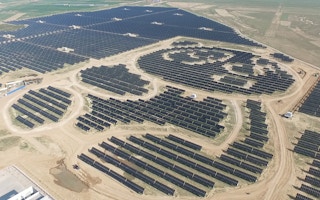The continued rise of renewable energy has led to even lower energy prices, less emissions in Australia, bigger solar plants and farms in India and China in 2017. What does this mean for fossil fuel giants and renewable energy challengers?
Here are the top energy stories for the year.
1. The world speeds ahead on renewables, while Southeast Asia lags
Renewable energy is providing record shares of electricity in countries such as the UK, Germany, and even parts of the US. In Central America, the island of Costa Rica generated enough renewable energy to power itself for 300 days of the year, largely through hydropower.
But progress on renewable energy in the Asia has been mixed. Southeast Asia’s largest wind energy project raised $1.1 billion in funding, and the Philippines launched its first solar panel production facility. On the other hand, Vietnam continues to advance its coal projects. Despite Southeast Asia’s strong potential for renewable energy, industry observers say the region is lagging on adopting renewables due to obstacles such as a profit-first mindset and unbankable projects.
2. The world’s largest lithium ion battery goes online
Elon Musk promised, and delivered, on a 100 megawatt lithium ion battery outside Jamestown, South Australia. The Tesla boss had made a wager with the state to build the facility in 100 days - failing which the state would have it for free - after rolling blackouts left the state without energy for days.
Activated at the end of November, the world’s largest lithium ion battery was put to the test for the first time in the second week of December when a coal plant tripped. Musk’s battery injected 100 megawatts into the grid in 140 milliseconds, proving to sceptical Australian politicians that renewable energy can be a reliable source of electricity.
3. Time for Big Oil to go green
A report by research group Wood Mackenzie has projected a decline in demand for fossil fuels and noted that growing investor pressure on companies to disclose climate change risks are posing both threats and opportunities for the world’s major fossil fuel companies. It suggested that oil giants need to start investing in renewable energy to stay competitive.
The industry made some steps this year: Shell has committed to slashing net greenhouse gas emissions by 20 per cent by 2035, and half by 2050, while British firm BP has spent $200 million to acquire a 43 per cent stake in Europe’s biggest solar developer, Lighthouse. This marks the firm’s return to the solar sector since 2011.
4. New innovations for cleaner energy
Researchers continued to invent new ways to get cleaner energy. An international group of scientists has developed a new type of yarn that produces electricity when stretched or twisted. Harnessing energy from ocean waves or human motion, the strands of carbon atoms are a form of renewable energy.
Another innovation unveiled this year the National Renewable Energy Laboratory in Golden, Colorado in the US, are perovskite cells, a type of solar thin film technology that can dissolve in solutions and sprayed onto a surface. This reduces solar panel production costs and allows the film to be applied to more kinds of surfaces.
5. Deepening divestments in the fossil fuel space
The movement for divestment from fossil space further gained momentum. Bowing to popular pressure, Australian banks this year have come out ahead on the divestments, with National Australia Bank implementing a formal policy to stop loans to new coal mining projects and Commonwealth Bank saying it would stop investing in coal. The 8th annual Fossil Fuel Finance Report Card found Asian banks to be the biggest culprits of fossil fuel funding.
In Paris earlier this month, the World Bank, Dutch bank ING and investment giant AXA announced plans to divest from fossil fuels. And in Singapore, students at liberal arts college Yale-NUS called on their university to pull its S$365 million endowment from “morally unacceptable” energy sources such as coal, oil and gas, the first fossil fuel divestment campaign in city-state.
This story is part of our Year in Review series, which looks at the top stories that shaped the business and sustainability scene over the last 12 months.





















